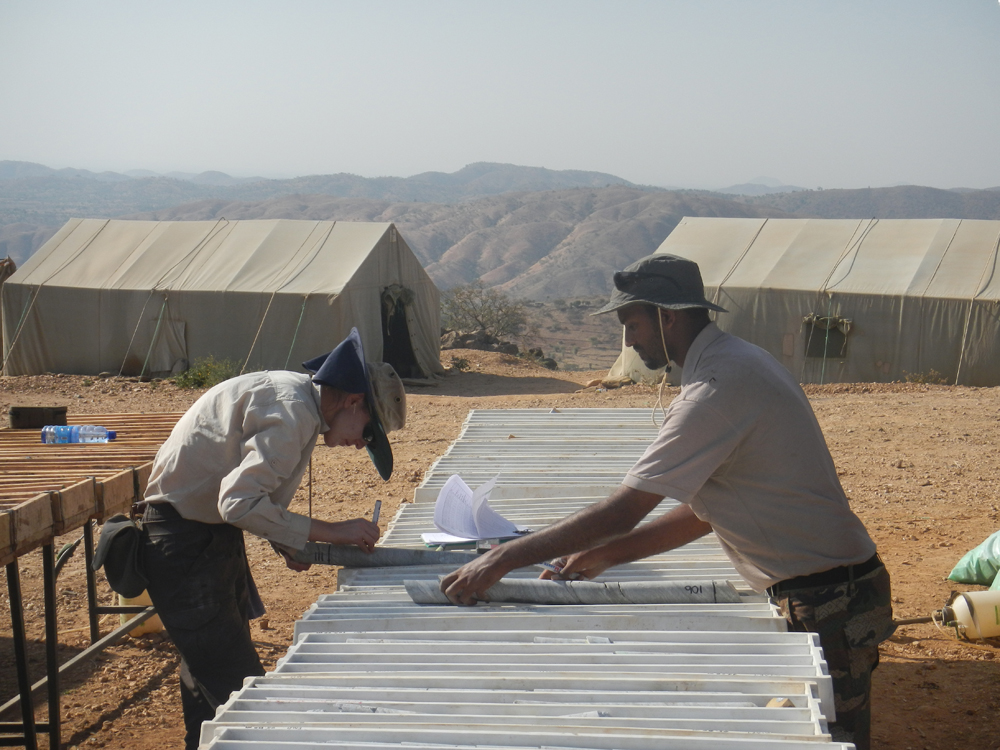East Africa Metals announces it has received Draft Model Agreements (DMAs) from the Ministry of Mines, Petroleum and Natural Gas for the company’s Mato Bula and Da Tambuk Projects, located in the Tigray National Regional State of the Federal Democratic Republic of Ethiopia.
The delivery of the DMAs indicates the Ministry has approved the permit application and advanced the permitting process to the next stage. The DMAs set out the rights and obligations of both parties with respect to the development and operation of the Mato Bula and Da Tambuk gold projects and, once executed, will result in the issuance of the mining licence for each project.
“This is another important milestone for East Africa Metals and our efforts to establish mining operations in Ethiopia,” said Andrew Lee Smith, East Africa Metals CEO. “The issuance of the DMAs for the Mato Bula and Da Tambuk projects by the Ministry represents an important permitting milestone and the company looks forward to further discussions with the Ethiopian government to conclude the process. Once issued, the company will have three permitted mining projects within a 15 km area of influence.”
The company says it is currently reviewing the DMAs and expects to respond to the Ministry after compiling an assessment of the documents. In anticipation of the pending development program, the company is currently engaged in project financing discussions with potential financiers and development partners.
Mato Bula Gold Copper Project:
- Post-tax NPV of $56.6 million for base case using $1,325 /oz Au, $3.00/lb copper and $17.00/oz silver, at an 8% discount rate.
- Payback of pre-production capital in 3 years from start of production.
- C1 cash operating cost of $412/oz Au including all on-site costs and AISC cost of $620/oz Au calculated with all on-site and off-site costs, TCRC charges, sustaining costs and net of by-product credits.
- Average annual metal production of approximately 34,750 oz gold, 1.67 million pounds copper and 4,780 oz silver.
- Pre-production capital cost of $54.2 million including contingency of 38% on direct costs and 26% on total of direct and indirect costs.
- Open pit mining utilising drill blast, trucks and shovels, waste stripping ratio of 9/1.
- Processing rate of 1,400 t/d using conventional crush/grind comminution, gravity concentration and flotation to produce a copper-gold concentrate. In addition a gold bearing pyrite concentrate will be produced and treated off-site by Carbon in Leach (CIL) technology.
- Life-of-mine metal recoveries of 86.4% for gold, 87.4% for copper, and 50% for silver.
- Concentrate grades average approximately 132 g/t gold, 25.5% copper and 28 g/t silver.
- Minimum 8-year mine life, based on proposed open pit depth of 190 m.
- Significant potential exists to extend mine life as drilling has identified mineralisation along strike and to 370 m down dip.
Da Tambuk Gold Project:
- Post-tax NPV of $13.0 million and IRR of 28.6% for base case using $1,325/oz Au and $17.00/oz silver, at 8% discount rate.
- Payback of pre-production capital in 1.9 years from start of production.
- C1 cash operating cost of $420/oz Au including all on-site costs and AISC cost of $642/oz Au calculated with all on-site and off-site costs, TCRC charges, sustaining costs and net of by-product credits.
- Average metal production of approximately 24,000 oz gold per year and 6,000 oz silver per year.
- Pre-production capital cost of approximately $34.1 million including contingency of 36% on direct costs and 26% total of direct and indirect costs.
- Underground trackless mining utilising ramp access, cut and fill and open stope mining.
- Processing rate of 550 t per day using crush/grind comminution, gravity concentration and CIL technology.
- Average life-of-mine metal recoveries of 93% for gold and 50% for silver.
- Minimum 4-year mine life based on mining plan depth to 200 m below surface.
- Excellent potential to extend mine life as drilling has intersected significant mineralisation to 260 m down dip.











